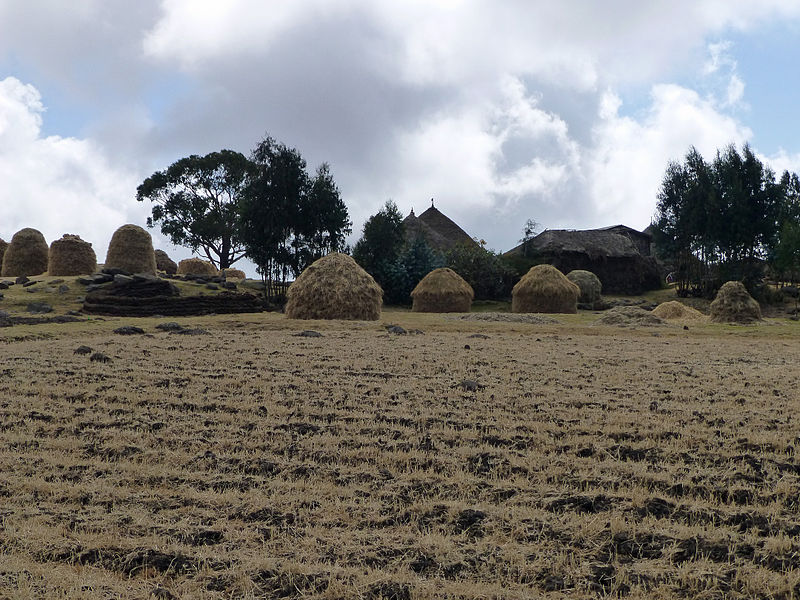The spread of mobile technology has been transformative in many developing countries. Mobile phones have lowered price dispersion, enabled mobile banking and transfers, and connected an increasing number of people to the internet.
Agricultural production in developing countries has been relatively less transformed by mobile phones and the spread of cheap processing power. This may be changing however. One study lead by Shawn Cole and Asanga Nilesh Fernando in India for example looks at mobile phones as a potential means of spreading information about agricultural issues, which in the future could potentially be a less costly and more efficient approach than traditional extension activities.
 Figure 1 – Village in central Ethiopia, along the national road 1, between Addis Abeba and Debre Birham (Author: Ji-Elle). http://commons.wikimedia.org/wiki/File:Village_au_centre_de_l%27Ethiopie_%282%29.jpg
Figure 1 – Village in central Ethiopia, along the national road 1, between Addis Abeba and Debre Birham (Author: Ji-Elle). http://commons.wikimedia.org/wiki/File:Village_au_centre_de_l%27Ethiopie_%282%29.jpg
In a new working paper, Davide La Torre and I discuss a different way in which mobile technology may affect small hold farmers in the future. We focus on an ever-present problem for small hold farmers: how to efficiently manage risk? In many instances, farmers diversify the crops that they hold so that shocks to one type of crop will not lead to overwhelming losses. Other methods include insurance or government support programs that help out when farmers have a particularly unlucky season.
Our contribution borrows from the finance literature, and particularly research into defining optimal investment choices in a portfolio. We use data from the Ethiopia Rural Household Survey and the Ethiopian Central Statistics Agency to demonstrate a set of techniques for estimating optimal investment allocation in smallholder farming. The approaches treat farming tasks, constraints, and investments as a portfolio problem, characterized by multiple competing objectives. We formulate several versions and solve them, estimating all model parameters using real data.
Such an exercise could just as easily be applied using a basic smartphone, highlighting the potential for expanding the applications for use in supporting farmers. As computing costs decline and mobile technologies become more prevalent, it will become increasingly easy to equip extension agents and others with programs that can calculate optimal portfolios that are specifically tailored to the desires of individual farmers.
The idea of the paper is not to argue that a couple of economists can create a model to tell farmers what to do. Instead, we highlight approaches that help farmers systematically evaluate the choices that they individually think are most important. Using real data, we provide examples of how this can be straightforwardly done. Leveraging publically available information about agricultural markets and marrying this information with the specific preferences of individual farmers can potentially lead to risk mitigating strategies that are less costly. Using technology in this way can also more easily evaluate information about price trends and production costs that are not easily considered without an organized approach.
